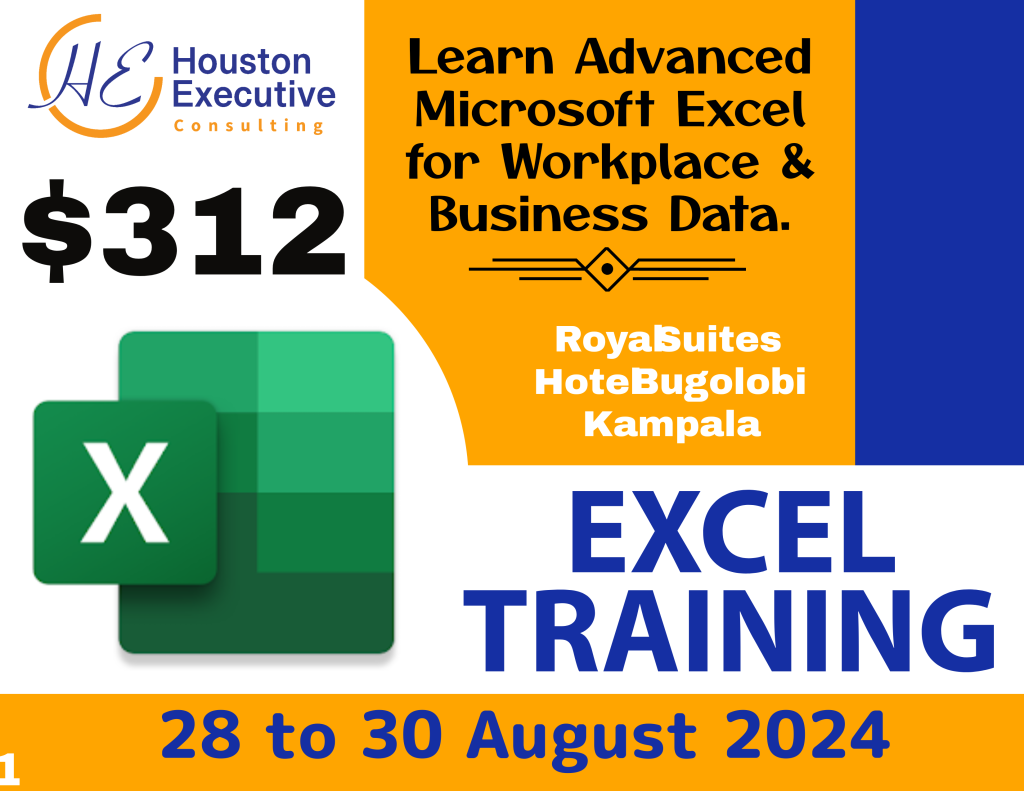Exit Interview Best Practices: Key Questions, Importance, and Tips to Improve Employee Retention & Workplace Culture
Exit interviews are critical to understanding why employees leave an organisation. They allow the company to learn about areas for improvement in culture, management, and operational efficiency.
This article presents a structured guide to conducting an exit interview. It explains why each question is valuable for gathering actionable insights and how to use employee feedback when leaving the organisation.
The Following Are the Top 20 Best Exit Interview Questions You Should Ask Departing Employees
- What was the length of your employment?
This seemingly simple question can yield a wealth of information. By examining the distribution of employee tenure, HR experts can identify patterns and trends that may indicate areas for improvement or strengths. For example, a high concentration of short-term employees may suggest onboarding, training, or workplace culture issues. Conversely, many long-term employees could indicate a positive work environment and effective retention strategies.
Analysing the Data: Key Considerations
- Average Tenure: Calculate the average length of employment to get a general sense of employee loyalty and turnover rates.
- Tenure Distribution: Analyze the distribution of tenure lengths to identify any significant clusters or gaps.
- Comparison to Industry Benchmarks: To assess your company’s performance, compare its average tenure to industry standards.
- Employee Segmentation: Segment employees by tenure length to identify specific needs and concerns of different groups.
Using Feedback to Improve HR Practices
The data collected from this question can be used to inform a variety of HR initiatives, including:
- Onboarding and Training: Identify areas where new employees may struggle and implement targeted training programs.
- Employee Engagement: Develop strategies to improve employee satisfaction and reduce turnover among short-term employees.
- Career Development: Offer tailored career paths and development opportunities to retain long-term employees.
- Succession Planning: Identify potential successors and provide them with the necessary training and development to fill critical roles.
- Compensation and Benefits: Evaluate compensation and benefits packages to ensure they are competitive and aligned with employee needs.
- What are your reasons for leaving?
“What are your reasons for leaving?” is a cornerstone of exit interviews. It provides invaluable insights into employee satisfaction, company culture, and potential areas for improvement. HR experts, CEOs, and management teams can leverage this feedback to enhance employee retention and organisational health.
Understanding the Why Behind the Why
When analysing employee responses to this question, it’s essential to delve deeper than surface-level reasons. For example, if an employee cites “low pay” as their reason for leaving, explore the underlying factors that made the compensation feel inadequate. Is it a matter of market competitiveness, internal equity, or a personal financial situation?
Identifying Common Themes and Trends
By analysing a series of exit interviews, HR professionals can identify recurring patterns in employee reasons for leaving. These trends can reveal systemic issues within the organisation, such as:
- Compensation and Benefits: Do employees feel underpaid or dissatisfied with benefits packages?
- Job Satisfaction: Are employees bored, unchallenged, or feeling overworked?
- Work-Life Balance: Are employees struggling to maintain a healthy balance between their personal and professional lives?
- Company Culture: Is the company culture toxic, unsupportive, or lacking growth opportunities?
- Leadership: Are managers and supervisors providing adequate guidance, support, and recognition?
Using Feedback to Inform Retention Strategies
Once common themes are identified, HR can proactively address these issues and improve employee retention. This may involve:
- Compensation Adjustments: Conducting market research to ensure competitive salaries and benefits.
- Job Enrichment and Development: Offering opportunities for professional growth, skill development, and career advancement.
- Work-Life Balance Initiatives: Implementing flexible work arrangements, wellness programs, and policies that support employees’ personal lives.
- Culture Improvement: Fostering a positive and inclusive company culture through team-building activities, recognition programs, and open communication channels.
- Leadership Development: Providing training and support to managers to enhance their leadership skills and create a supportive work environment.
Case Study: A Company’s Approach
A non-profit employer’s body where I used to work noticed a trend in exit interviews where employees cited “lack of career growth” as their primary reason for leaving. In response, the company implemented a mentorship program, increased training budgets, and created a clear career ladder to provide employees with opportunities for advancement. This initiative led to a significant improvement in employee satisfaction and retention rates.
- What specific circumstances or events led you to leave the organisation?
This question aims to uncover the immediate catalysts that prompted the employee’s departure. By understanding the specific events or situations that contributed to their decision, HR professionals, CEOs, and management teams can gain valuable insights into potential issues within the organisation.
Importance of This Question
- Identifying Immediate Concerns: This question helps pinpoint issues contributing to employee turnover. It could be a conflict with a manager, an excessive workload, or organisational changes that negatively impact the employee’s experience.
- Addressing Root Causes: By understanding the immediate triggers, HR can delve deeper into the underlying causes of the employee’s departure. This could involve addressing systemic issues, improving work-life balance, or enhancing organisational communication and collaboration.
- Preventing Future Turnover: Identifying and addressing the specific reasons for an employee’s departure can help prevent similar situations from occurring in the future. Organisations can reduce turnover rates and retain top talent by proactively improving the workplace environment and addressing employee concerns.
How to Use Feedback from This Question
- Analyze Common Themes: Look for patterns or recurring themes in the responses to this question. Are multiple employees mentioning similar issues, such as excessive workload or a toxic work environment? Identifying common themes can help prioritise areas for improvement.
- Conduct Follow-up Interviews: If specific concerns are raised, consider conducting follow-up interviews with the departing employee or former manager to gather more details. This can provide valuable insights into the issue’s root causes and help develop targeted solutions.
- Implement Corrective Actions: Based on the feedback received, develop and implement corrective actions to address the identified issues. This might involve implementing new policies, providing additional training, or improving communication channels.
- Monitor and Evaluate: Regularly monitor the effectiveness of the implemented changes and gather feedback from employees to ensure that the issues have been adequately addressed. This ongoing evaluation will help maintain a positive and supportive work environment.
- What were your primary duties?
Understanding an employee’s primary duties is crucial for HR and organisational development. It helps identify misalignments between job descriptions and actual responsibilities, uncover role confusion, and assess workload and stress levels. By analysing employee responses to “What were your primary duties?” organisations can take proactive steps to address issues and improve employee satisfaction.
- Did your job responsibilities change significantly during your tenure with the company? If so, please describe the nature of these changes and how they affected your job satisfaction and overall experience.
Explanation and Usage of Feedback
This question offers a more detailed and probing exploration of organisational job evolution. By asking about the changes’ nature and impact, HR can gain valuable insights into employee satisfaction and potential areas for improvement.
Key points to consider when analysing feedback:
- Frequency and Magnitude of Changes:
- Frequent changes could indicate a lack of clear job descriptions or organisational instability.
- Significant changes might suggest a mismatch between the employee’s skills and current role.
- Impact on Job Satisfaction:
- Positive impacts: Could highlight opportunities for growth and development.
- Negative impacts: This may signal issues with work-life balance, job security, or career progression.
- Reasons for Changes:
- Organizational restructuring: This could indicate a need for improved communication or transition planning.
- Employee skill development: Might suggest successful career advancement strategies.
- External factors: Could reveal industry trends or economic challenges impacting the company.
Actionable Steps Based on Feedback
- Review Job Descriptions: Ensure they accurately reflect current responsibilities and expectations.
- Implement Change Management Processes: Provide clear communication and support during organisational transitions.
- Offer Training and Development Opportunities: Help employees adapt to changing roles and acquire new skills.
- Conduct Regular Performance Reviews: Identify improvement areas and provide performance feedback.
- Create a Culture of Open Communication: Encourage employees to share their concerns and suggestions.
- What did you like about your job?
This question is crucial for HR experts and CEOs to gather valuable insights into employee satisfaction and retention. It provides a direct avenue for employees to express positive aspects of their work experience, highlighting what the company is doing well.
Organisations can reinforce these positive elements by understanding what employees appreciate about their jobs and create a more fulfilling work environment. This can lead to increased employee morale, productivity, and long-term success.
Key insights that can be gleaned from this question include:
- Company culture: Employees may mention aspects of the company’s culture that they find positive, such as supportive colleagues, a collaborative atmosphere, or a strong sense of purpose.
- Work-life balance: Employees may appreciate flexible work arrangements, generous time off policies, or opportunities for remote work.
- Growth opportunities: Employees may highlight career development opportunities, such as training programs, mentorship, or advancement opportunities.
- Job satisfaction: Employees may express satisfaction with their job duties, responsibilities, or the impact of their work.
- Recognition and rewards: Employees may appreciate recognition for their contributions, incentives, or performance-based rewards.
How to use feedback from this question:
- Identify areas of strength: Analyze the feedback to identify specific aspects of the job that employees find most favourable. This information can be used to reinforce these areas and ensure they remain a vital part of the employee experience.
- Measure employee satisfaction: Track changes in employee satisfaction over time by comparing responses to this question across different surveys or feedback mechanisms. This can help identify trends and areas for improvement.
- Inform HR policies and practices: Use the feedback to inform HR policies and practices, such as compensation, benefits, and performance management. For example, if employees consistently desire more training opportunities, the company can invest in developing new programs or resources.
- Recognize and reward employees: Publicly acknowledge employees who have expressed positive sentiments about their jobs. This can boost morale and encourage other employees to share their positive experiences.
- Address negative feedback: If any negative feedback is identified, investigate the underlying issues and take steps to address them. This can help improve employee satisfaction and prevent turnover.
- What did you dislike about your job?
This seemingly simple question can provide invaluable insights into employee satisfaction and engagement. By understanding the specific aspects of the job that employees dislike, companies can proactively address these issues and create a more positive work environment.
Key Areas of Focus
When analysing the responses to this question, HR experts and CEOs should pay particular attention to the following areas:
- Workload and Stress: Employees may express dissatisfaction with excessive workload, tight deadlines, or a lack of work-life balance. These factors can contribute to burnout and decreased productivity.
- Communication and Feedback: Issues related to communication, such as unclear expectations, lack of feedback, or insufficient information sharing, can lead to frustration and confusion among employees.
- Leadership and Management: Negative experiences with management, including poor leadership, micromanagement, or a lack of support, can significantly impact employee morale and job satisfaction.
- Compensation and Benefits: Concerns about compensation, benefits, or perceived unfairness in these areas can be a significant source of dissatisfaction.
- Culture and Environment: Issues related to company culture, such as a toxic work environment, lack of diversity and inclusion, or a negative company reputation, can also contribute to employee dissatisfaction.
Using Feedback to Drive Positive Change
Once the key areas of dissatisfaction have been identified, HR experts and CEOs can take several steps to address these issues and improve the workplace:
- Prioritize Problem Areas: Based on the frequency and severity of the complaints, prioritise the areas requiring immediate attention.
- Implement Targeted Solutions: Develop and implement specific strategies to address each identified issue. This may involve changes to policies, procedures, or work processes.
- Gather Additional Data: Conduct further research or surveys to gather more detailed information about the specific concerns and potential solutions.
- Communicate Openly: Inform employees about the steps to address their concerns. Open and transparent communication can help build trust and improve morale.
- Monitor Progress: Track the effectiveness of the implemented changes and make adjustments as needed. Regular monitoring can help ensure that the initiatives have the desired impact.
- How could we enhance your role to foster greater job satisfaction, productivity, and overall well-being? Please provide specific suggestions based on your experiences and insights.
Explanation
This question is designed to elicit more detailed and actionable employee feedback. It specifically focuses on:
- Job satisfaction: This encourages employees to identify factors that contribute to or detract from their overall happiness and fulfilment in their roles.
- Productivity: By asking about ways to improve productivity, we can gain valuable insights into potential bottlenecks or inefficiencies in the workflow.
- Overall well-being: This broad question invites employees to consider the impact of their job on their physical, mental, and emotional health.
How to Use Feedback from This Question
- Identify Common Themes: Analyze the responses to identify recurring themes or patterns. These may include issues related to workload, work-life balance, communication, resources, or organisational culture.
- Prioritize Improvements: Based on the frequency and severity of the issues raised, prioritise potential areas for improvement. Consider the impact of these changes on both individual employees and the organisation as a whole.
- Develop Action Plans: Create detailed action plans to address the identified issues. These plans should include specific goals, timelines, and responsible parties.
- Implement Changes: Implement the changes promptly and effectively. Communicate the changes clearly to employees and provide necessary training or support.
- Monitor and Evaluate: Continuously monitor the impact of the changes and gather feedback from employees to assess their effectiveness. Make adjustments as needed to ensure ongoing improvement.
- Were you satisfied with your career progression? If not, why?
This question is a crucial indicator of employee engagement and satisfaction. It directly addresses the perceived opportunities for growth and advancement within the organisation. When employees feel that their careers are stagnant or their potential is not fully realised, they may become disengaged, demotivated, and even seek employment elsewhere.
Critical Insights from Employee Responses
- High Satisfaction: If many employees express satisfaction with their career progression, it suggests that the company effectively provides opportunities for growth and development. This could be due to clear career paths, regular performance reviews, mentorship programs, and opportunities for training and development.
- Low Satisfaction: If many employees express dissatisfaction with their career progression, it signals potential issues within the organisation. Some common reasons for dissatisfaction may include:
- Limited Growth Opportunities: Employees may feel that there are few opportunities for advancement within their current roles or departments.
- Lack of Clear Career Paths: Employees may be unsure about the steps they need to take to progress in their careers.
- Ineffective Performance Reviews: Employees may feel that performance reviews are unfair or transparent or do not provide adequate feedback for growth.
- Insufficient Training and Development: Employees may feel they lack the necessary skills and knowledge to advance in their careers.
- Unfair Promotion Practices: Employees may perceive that promotions are based on factors other than merit, such as seniority or personal connections.
Using Feedback to Improve Career Progression
By analysing employee responses to this question, HR can gain valuable insights into the effectiveness of the organisation’s career development initiatives. Here are some steps that HR can take to address any issues identified:
- Conduct a Thorough Analysis: Analyze the data collected from employee surveys to identify the root causes of dissatisfaction with career progression.
- Develop a Career Development Plan: Create a comprehensive career development plan that outlines clear career paths, promotion criteria, and opportunities for training and development.
- Implement Mentorship Programs: Establish mentorship programs to connect employees with experienced colleagues who can provide guidance and support.
- Enhance Performance Reviews: Improve the effectiveness of performance reviews by ensuring that they are fair and transparent and provide constructive feedback for growth.
- Invest in Training and Development: Provide employees with opportunities for training and development that align with their career goals and the organisation’s needs.
- Review Promotion Policies: Ensure that promotion policies are fair, transparent, and merit-based.
- Communicate Career Opportunities: Regularly communicate career opportunities and advancement paths to employees.
- Seek Employee Input: Involve employees in developing and implementing career development initiatives to meet their needs and expectations.
- Were you satisfied with your salary/benefits?
Salary and benefits are fundamental aspects of employee compensation that significantly influence job satisfaction and retention. Gathering insights directly from employees is essential to gauge the effectiveness of a company’s compensation strategy. The question, “Were you satisfied with your salary/benefits?” provides a valuable opportunity to uncover employee perceptions and identify areas for improvement.
Critical Considerations for HR Experts and Management Teams
When analysing employee responses to this question, HR experts and management teams should consider the following:
- Comparative Analysis: Benchmark the company’s salary and benefits packages against industry standards and competitors. This will help determine if the company is offering competitive compensation.
- Employee Demographics: Analyze responses based on job level, tenure, department, and location. This can reveal disparities in satisfaction levels and identify specific groups that may require targeted interventions.
- Correlation with Other Metrics: Examine the relationship between salary and benefits satisfaction and other HR metrics, such as employee turnover, engagement, and productivity. This can help identify any underlying factors contributing to dissatisfaction.
Utilising Feedback to Improve Compensation Strategies
The insights gained from employee feedback on salary and benefits can be used to implement several strategies:
- Salary Adjustments: If the analysis indicates that salaries are below market rates, consider implementing salary increases or adjustments to align with industry standards.
- Benefit Enhancement: Evaluate the company’s benefits offerings and identify opportunities for improvement. This may involve expanding the range of benefits, increasing coverage, or introducing new options.
- Communication and Transparency: Enhance communication around compensation policies and practices to ensure employees understand the factors influencing their pay and benefits. This can help build trust and improve employee satisfaction.
- Performance-Based Compensation: Consider implementing performance-based compensation programs to reward high-performing employees and motivate them to achieve their goals.
- Were you satisfied with your supervisor or the quality of supervision?
This question directly addresses supervisors’ central role in shaping employee experiences. Negative feedback to this question can indicate potential issues within the organisation’s supervisory structure or management practices.
How to Use Feedback
Analysing the responses to this question can provide valuable insights for HR professionals and management teams. If many employees express dissatisfaction with their supervisors or the quality of supervision, it is essential to take proactive steps to address the underlying issues. This may involve:
- Supervisory Training: Training supervisors on leadership skills, communication techniques, and performance management can help them improve employee interactions and create a more positive work environment.
- Management Development Programs: Implementing management development programs can equip managers with the tools and knowledge to effectively lead their teams and support their supervisors.
- Employee Feedback Mechanisms: Establishing regular feedback mechanisms, such as employee surveys or one-on-one meetings, can provide employees with an opportunity to express their concerns and suggestions, allowing for timely intervention and problem-solving.
- Organizational Culture Assessment: An organisational culture assessment can help identify any underlying cultural factors contributing to negative supervisor-employee relationships.
- How would you describe your working relationship with your supervisor?
Importance: This question provides a vital window into the employee-supervisor dynamic. It allows for a nuanced understanding of the interpersonal aspects of the relationship, including communication, support, and leadership style.
Critical Insights for HR Experts, CEOs, and Management Teams:
- Communication: Are there open lines of communication? Does the supervisor actively listen to employee concerns and feedback? Are expectations communicated and understood?
- Support: Does the supervisor provide adequate support, guidance, and mentorship? Are employees empowered to take initiative and make decisions?
- Leadership Style: How does the supervisor’s leadership style align with the company’s culture and values? Is the supervisor a motivator, a mentor, or a micromanager?
Using Feedback from Question 12:
- Identify Areas for Improvement: By analysing the responses, HR can identify areas where supervisors may need additional training or support in communication, leadership, or mentorship skills.
- Recognize High-Performing Supervisors: Positive feedback can be used to recognise and reward exceptional supervisors, fostering a culture of excellence.
- Address Issues Proactively: Negative feedback should be addressed promptly and discreetly to prevent more significant issues from developing. HR can work with supervisors to develop action plans to improve their relationships with employees.
- Inform Strategic Decision-Making: The insights gained from this question can inform strategic decisions related to leadership development, organisational culture, and employee satisfaction.
- How could your supervisor improve their leadership style?
Constructive criticism about leadership can guide the company in enhancing management skills. Employees consistently mentioning specific areas of improvement can inform future leadership training programs.
HR experts and CEOs can analyse the feedback responses to this question to identify recurring themes and patterns. These insights can be used to develop targeted leadership training programs that address specific areas of need. For example, if employees frequently mention a lack of communication or transparency, the training program can focus on improving these skills.
Additionally, feedback can foster a culture of open communication and trust between leaders and employees. Leaders willing to listen to feedback and take action can build stronger relationships with their teams and create a more positive work environment.
- Was your performance hindered by any company policies or procedures?
HR departments can identify specific policies or procedures that are causing issues. This information can streamline processes, reduce unnecessary red tape, and ensure policies align with company goals and values.
Once identified, problem areas should be thoroughly investigated. This may involve conducting interviews, surveys, or focus groups to gather more detailed feedback. The collected data can then be used to implement changes and improvements. For example, outdated policies might be updated or eliminated, while overly complex procedures could be simplified. By addressing these issues, companies can foster a more productive and satisfying work environment for their employees.
- How would you describe your working relationship with your co-workers?
The question provides invaluable insights into team dynamics. It reveals the overall sentiment among employees regarding their interactions and collaborations. Positive responses indicate a harmonious and productive work environment, while negative feedback may signal underlying issues that require attention.
Identifying Potential Issues
Negative feedback on working relationships can point to several potential problems, such as:
- Communication breakdowns: Employees may feel that their voices are not heard or that there are misunderstandings and misinterpretations.
- Conflict resolution challenges: Disputes may not be handled effectively, leading to resentment and decreased morale.
- Lack of trust: Employees may not feel comfortable sharing their opinions or collaborating with their colleagues.
- Poor leadership: Ineffective leadership can contribute to negative team dynamics.
Using Feedback to Improve Team Dynamics
To address these issues, HR professionals and management teams should:
- Encourage open communication: Create a culture where employees feel comfortable sharing their thoughts and concerns.
- Implement effective conflict resolution strategies: Provide training on conflict resolution techniques and facilitate open dialogue.
- Foster trust and collaboration: Promote teamwork and encourage employees to support one another.
- Provide leadership development opportunities: Ensure leaders have the skills and knowledge to create a positive work environment.
- Do you feel your job contributed to the company’s success?
This query delves into a fundamental aspect of employee satisfaction and engagement. Employees who perceive their work as meaningful and aligned with the company’s broader goals are more likely to be motivated and committed.
A high percentage of positive responses to this question indicates that employees feel valued and that their contributions are recognised. However, many adverse reactions may signal job design, communication issues, or a lack of alignment between individual roles and the company’s overall strategy.
To effectively use feedback from this question, HR professionals and management teams should:
- Analyze trends: Identify response patterns across different departments, teams, or levels of seniority. This can help pinpoint areas for improvement.
- Conduct follow-up interviews: Speak with dissatisfied employees to gain deeper insights into their concerns and explore potential solutions.
- Review job descriptions and performance expectations: Ensure roles are clearly defined and aligned with the company’s strategic objectives.
- Improve communication: Enhance internal communication channels to keep employees informed about the company’s goals, progress, and the impact of their work.
- Provide opportunities for growth and development: Offer employees opportunities to learn new skills and advance their careers within the organisation.
- Do you feel any working conditions at this company are detrimental?
This query invites the departing employee to share concerns about the physical or psychological environment.
By understanding the specific areas that contribute to a hostile working experience, HR experts can take proactive steps to address these issues. This might involve improving physical conditions such as lighting, temperature, or noise levels or addressing psychological factors such as workload, stress management, or interpersonal relationships.
Addressing poor working conditions is about improving employee satisfaction and preventing future problems such as high turnover rates and low morale. By taking action based on employee feedback, companies can create a healthier, more productive work environment that attracts and retains top talent.
- Do you have any suggestions on how to improve working conditions here?
By encouraging employees to share their thoughts, you can gain valuable insights into areas that require attention and identify potential solutions.
One practical approach is to create a safe and anonymous platform for employees to provide feedback. This could be through a survey, a suggestion box, or one-on-one meetings with HR representatives.
The key is ensuring employees feel comfortable expressing their opinions without fear of repercussions. Once feedback is gathered, analysing and prioritising the suggestions is essential. Look for common themes or recurring issues that multiple employees raise. This will help you identify the most pressing concerns and focus on implementing meaningful improvements.
Finally, it’s crucial to communicate the feedback process’s results to employees. Transparency builds trust and demonstrates your commitment to addressing their concerns.
Share the key findings, the actions being taken, and the timeline for implementing changes. This will help employees feel valued and invested in the organisation’s growth and development.
- Did you receive adequate recognition for your contributions?
This question is essential to explore whether employees felt valued and appreciated during their tenure. Recognition plays a critical role in employee satisfaction, motivation, and retention. Lack of acknowledgement for hard work or accomplishments can lead to frustration, disengagement, and, eventually, a decision to leave the company.
Why This Question Is Important:
- Understanding Motivation: Employees who feel recognised are more likely to stay motivated and engaged. By asking this question, the company can gauge whether its recognition programs (formal or informal) are adequate or need improvement.
- Improving Retention: If multiple employees leave without recognition, it could indicate a cultural issue. Simple acts of appreciation, like verbal praise or reward programs, can significantly reduce turnover.
- Fostering a Positive Workplace Culture: Employees thrive in environments where their efforts are acknowledged. Feedback from this question can guide management in fostering a culture of appreciation and support, creating a more positive and productive workplace.
How to Use This Feedback:
- If many employees express dissatisfaction with recognition, it may be necessary to implement or improve systems such as employee-of-the-month programs, public acknowledgement in team meetings, or formal bonus structures for outstanding performance.
- For more minor changes, simply encouraging managers to offer praise and gratitude for a job well done frequently can make a significant impact.
Including this question in the exit interview can provide critical insights into whether recognition—or the lack thereof—contributed to the employee’s decision to leave and help companies refine how they show appreciation in the future.
- Is there anything else you’d like to share about your experience at this organisation that we haven’t already discussed? This could include suggestions for improvement, concerns, or any other feedback you think is essential for us to know.
Rationale:
This exit question is more direct and engaging than the original. It prompts employees to provide actionable feedback, such as suggestions for improvement or concerns, which the HR team, CEO, and management can address.
By encouraging employees to share their thoughts freely, the company can gain valuable insights into their overall satisfaction and identify areas to enhance the employee experience.
How to Use Feedback:
The feedback collected from this question can be used in several ways:
- Identify trends and patterns: Analyze the responses to identify common themes or concerns multiple employees raise. This can help pinpoint areas where the company needs to take immediate action.
- Prioritize initiatives: Prioritize improvement efforts based on the feedback received and allocate resources accordingly.
- Measure progress: Track the implementation of changes and measure their impact on employee satisfaction over time.
- Foster a culture of open communication: Demonstrate to employees that their feedback is valued and taken seriously by sharing the survey results and highlighting the actions taken to address their concerns.
Conclusion
Compelling exit interviews are essential for organisations that enhance employee retention and foster a positive workplace culture. By asking the right exit interview questions, you can gain valuable insights into why employees leave and how to improve employee satisfaction. Understanding the importance of exit interviews helps HR teams collect meaningful employee feedback that can be used to address critical concerns like compensation, leadership, and work-life balance.
Implementing exit interview best practices, such as asking open-ended questions and creating a comfortable setting, ensures you gather honest, actionable responses. Use an exit interview template tailored to your organisation’s needs, and always strive to create a process that encourages transparency.
When you know how to conduct a successful exit interview, you can uncover trends that contribute to employee turnover and take proactive steps to retain top talent. Whether you’re focusing on how to get honest answers in an exit interview or finding the right exit interview questions to improve employee retention, conducting these interviews with care can lead to impactful changes in your organisation’s HR best practices.
Remember, exit interviews are essential. They aren’t just about understanding why employees leave—they’re about using that information to build a better work environment for those who stay. By refining your approach and asking what to ask in an exit interview, you’ll create an opportunity for growth, making each interview a stepping stone toward long-term success.












